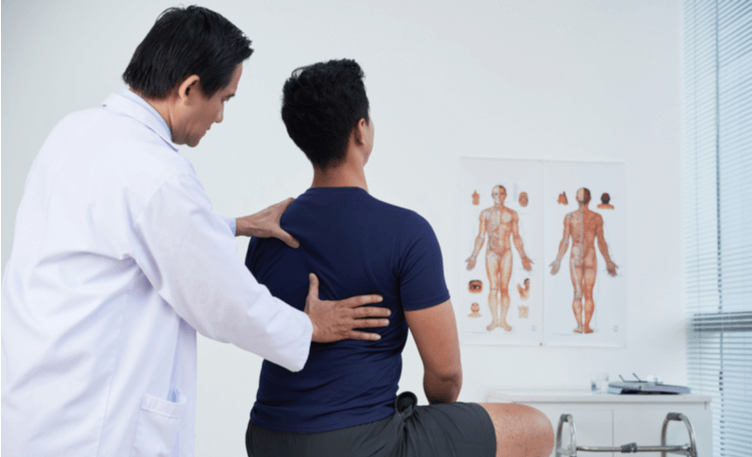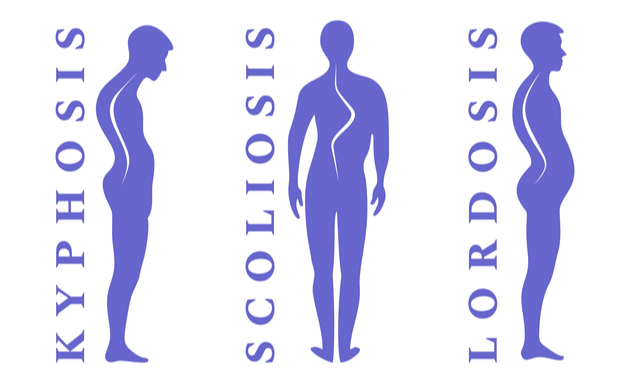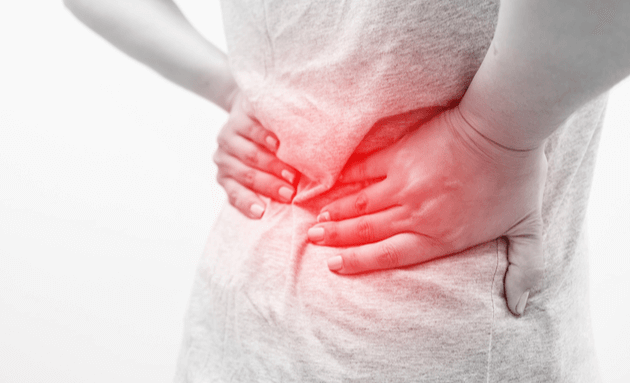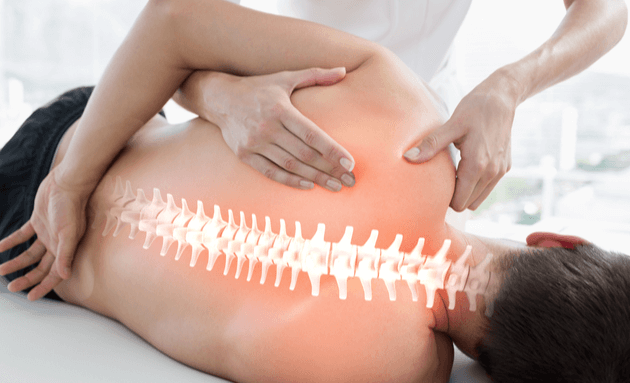
Understanding Spine Curvature Disorders
The spinal cord, commonly called the backbone, is made up of a stack of smaller bones (called vertebrae). A healthy spine has gentle curves that help it absorb stress from gravity and body movements. Spine abnormalities cause misalignment of the curvature and results in spine curvature disorders like lordosis, kyphosis, and scoliosis.
The Types of Spine Curvature Disorders

There are three main types of spine curvature disorders are:
- Lordosis: A condition in which the spine of a person curves inward in the lower back. It is also known as swayback.
- Kyphosis: Kyphosis results in a rounded upper back (more than 50 degrees of curvature).
- Scoliosis: Someone with scoliosis will have an S-shaped or C-shaped curve to their spine.
How are Spine Curvature Disorders Caused?

There are a number of health problems that may cause spine curvature disorders:
-
Causes of Lordosis:
- Achondroplasia, A condition in which there is abnormal bone growth, resulting in the short height associated with dwarfism
- Spondylolisthesis, A condition in which a vertebra in the lower back slips forward
- Osteoporosis, a condition in which vertebrae become fragile and can be easily broken (compression fractures)
- Obesity, or being extremely overweight
- Kyphosis, A condition that causes a rounded upper back
- Discitis, a condition caused by infection. It results in Inflammation of the disc space between the bones of the spine
- Benign (harmless) juvenile lordosis
-
Causes of Kyphosis:
- Abnormal vertebrae development in utero (congenital kyphosis)
- Poor posture or slouching (postural kyphosis)
- Scheuermann's disease, a condition that causes vertebrae to be misshaped (Scheuermann's kyphosis)
- Arthritis
- Osteoporosis
- Spina bifida, a birth defect in which the spinal column of the fetus does not close completely during development inside the womb
- Spine infections
- Spine tumours
-
Causes of Scoliosis
Doctors do not know what causes the most common type of scoliosis seen in adolescents. However, it is often linked to family history. An injury, birth defect, or infection may also be a cause.
Symptoms of a Spine Curvature Disorder
-
Symptoms of Lordosis may include:
- Appearing swayback, with the buttocks being more pronounced
- Having a large gap between the lower back and the floor when lying on your back on a hard surface
- Back pain and discomfort
- Problems moving certain ways
-
Symptoms of Kyphosis are usually visible in nature and include:
- Bending forward of the head compared to the rest of the body
- Hump or curve to the upper back
- Fatigue in back or legs
- Postural kyphosis does not typically cause back pain; however, physical activity and long periods of standing and sitting can cause discomfort for people with Scheuermann's kyphosis.
-
Symptoms of Scoliosis may include having:
- Disproportionate shoulder blades
- A disproportionate waist or hip
- Leaning toward one side
Treatment Methods for Spine Curvature Disorders

Treatment is determined based on the severity and type of spinal curvature disorder you have. Mild spinal curvature may not be treated at all. More severe spinal curvature may require the use of a back brace or surgery.
-
Treatment for Lordosis Include:
- Medication to manage pain and swelling
- Exercise and physical therapy to increase muscle strength and flexibility
- Wearing back braces
- Weight loss
- Surgery
-
Treatment for Kyphosis Include:
- Exercise and medication to manage pain
- Wearing back braces
- Surgery
- Exercises and physical therapy to increase muscle strength
-
Treatment For Scoliosis Include:
- Observation. You will need to check with your doctor every four to six months if you have a slight curve. This will help understand if it’s getting worse and requires attention or not.
- Bracing. Based on the degree of the curve, a back brace is sometimes prescribed for children who are still growing. Bracing can help prevent worsening of the curve.
- Surgery. If the curve is severe and is getting worse, surgery can help correct it.
- Body casting. A method mostly for young children whose scoliosis can get worse over time. The shoulders to the lower trunk are put in a cast to prevent further curving.
What Types of Surgery Are Used to Treat Spine Curvature Disorders?
The following procedures may be used to treat spine curvature disorders:
- Spinal instrumentation
- Artificial disc replacement.
- Kyphoplasty.
Consult your doctor for details on surgical methods to treat spine curvature disorders.

